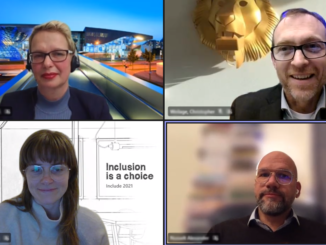
Everyone who has ever worked in international project management is aware that it is inspiring, interesting and even synergetic to work in multi-diverse teams. But it can also be unproductive and grueling. Misunderstandings occurring as a result of incorrect perception and interpretation lead to situations where people not only put one foot in it – but both!
International teams 2020
In current and future projects, each manager and each leader will be confronted with maximum diversity. In addition to various performance levels within work teams, leaders will not only have to integrate several generations, but several cultures as well.
Conservative calculations of current demographic developments hint to a future where – in standardized teams of ten – by 2020, 20 per cent of each team will be over 50 years old and 50 percent will be international. Leading and cooperating with generations X, Y and Z must therefore be adjusted and reconsidered in terms of the specific situation: A huge challenge in view of overlapping international diversity.
Communication in international teams
In international projects and internationally oriented product and service offers, a person-centered approach and culture will most probably predominate. Heterogeneous teams often perform better – but only when competently led.
In most cases, it is not the language barrier that causes the biggest problems: Global English is the new language to communicate with. It’s a simple, no-frills English with a vocabulary of 1000+ that functions with a basic vocabulary plus the technical terminology of the specific field or industry.
But what, then, is the cause of misapprehensions? What causes most problems in international teams are the manners and habits of communication. How do I communicate what, and what means do I use to do so? Do I address matters directly or do I avoid putting them into focus because I am more interested into building (or maintaining) personal relationships? This is the crux of all three communication channels:
Verbal:
– the spoken word, referring to content
Non-verbal:
– direct body language such as face expressions, use of hands, arms etc.;
– indirect body language such as exchange of business cards, dress code etc.
Para-verbal:
– use of the voice and its modulation such as dynamics (loudness), intonation and accent on individual words or passages, and also the pauses
The virtual reality of international teams
Things are not made easier by the fact that international teams don’t physically work together in one room necessarily, but instead are dispersed across an enterprise or even work for different companies. In many cases, team members live in all four corners of the globe, making face-to-face (f2f) communication hard or even impossible. This furthers the risk of more erroneous interpretation, which is already likely to occur.
Setting up international teams
Leadership, however, begins much earlier: It starts in the forming phase, where international team members are gently led into and through the storming phase and brought back to the meta-level again and again by a change of perspective. Delegating leadership functions within an international team can achieve consolidation in the sense of shared leadership, smoothing the path to the norming phase.
For this very reason, support must be upheld and continued throughout the norming and performing phases. In them (and by self-analysis), the greatest learning effects with regard to projects and team members are produced. The knowledge thus gained can then be transferred to and used for further projects. This could bring forth the ideal international team which is functioning rather in heaven than in hell.
In the 60s, Tuckman1 already described the five phases of team building that are still applied today: Forming, storming, performing, norming, adjourning. Most leaders are aware of them, and they also know that the storming phase is the most critical one: It exponentiates a team’s diversity and virtual functioning.
In such cases, team building becomes particularly important. Creating opportunities for the teams to build trust in each other is crucial. Experience with remote leadership has clearly shown that leading by goal setting and goal verification AND leading by trust are the two decisive factors of success. Teams led only by supervision and control will fail and cause sustained damage to an organization’s culture in the long run.
Sources:
Albrecht, A. (2014), Wunsch und Wirklichkeit der Generation Y. Unternehmeredition Personal (Vol.5) October 2014, pp 40-41.
1Lewis, Richard D. (2012), When Teams Collide: Managing the International Team Successfully. Author(s): Lewis, Richard. Publication: Nicholas Brealey Publishing, London. Tuckman, Bruce (1965), “Developmental sequence in small groups”. Psychological Bulletin 63 (6): 384–99.




